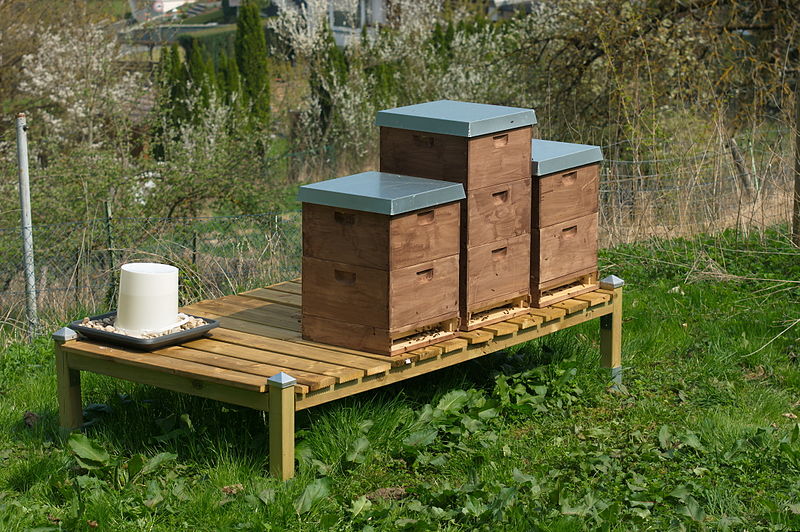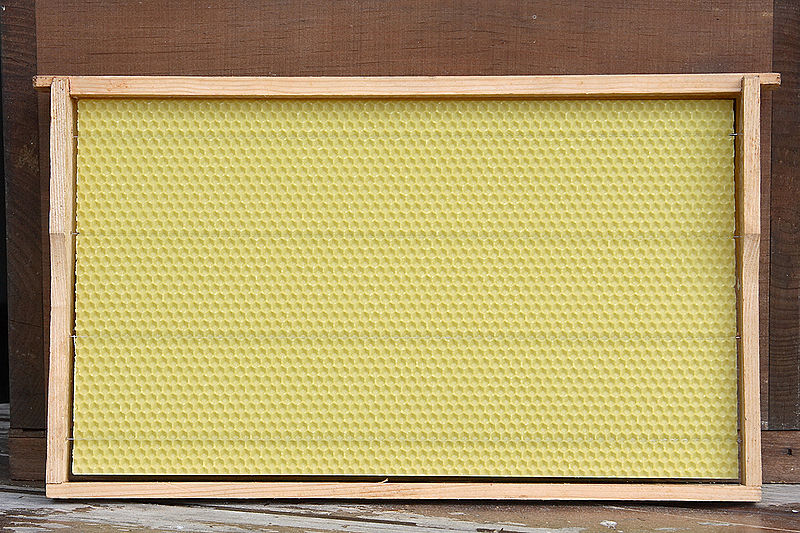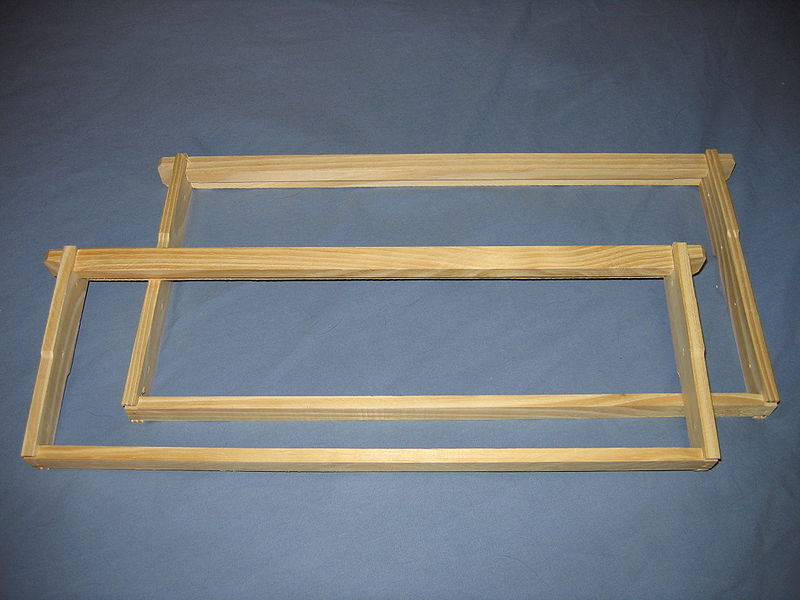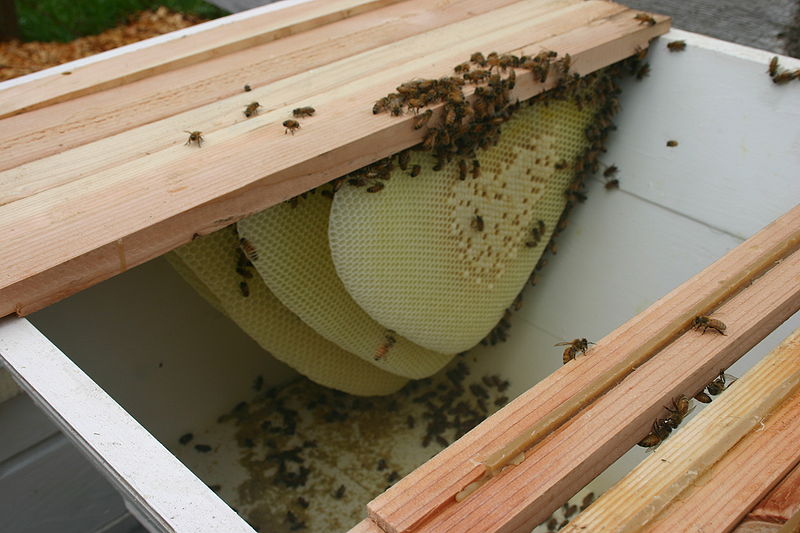There isn’t the best beehive. We all will have our preferences, plus our circumstances are likely to impact the choice we make. But when we qualify this question for beginners, I think the answer’s pretty clear.
The best beehive for beginners is the Langstroth hive due to the accessibility of resources. For a starting backyard beekeeper, support in the form of community, publications, and suppliers is the most important part. The fact is the Langstroth hive is the most widely used hive with the most support.
That’s not to say the Langstroth hive is the best. Others find the heavy boxes restrictive, some don’t agree with using frames and foundations, and I get how changing systems down the line can be a pain. We’ll talk about the pros and cons of using a Langstroth hive, touch on some of the alternatives, and why I think it’s the best for beginners.
Table of Contents
What is the Langstroth hive?
We can’t have a discussion about the Langstroth hive without talking about the name. This type of beehive was developed by Lorenzo Lorraine Langstroth, a minister who earned a patent on the design in 1852.
Despite its long history, the overall design hasn’t changed much. It’s still a movable-frame beehive that doesn’t necessitate the poisoning of bees to get their honey. Here’s what the Langstroth hive looks like today.

When I was starting out, I thought it looked like a regular box, hard to distinguish from other beehive types. Don’t worry about it, you’ll see the distinctions over time.
Langstroth hive varieties
Langstroth hives come in 5, 8, and 10 frames, with and without foundation.
This is a picture of a “with foundation” frame.

And here’s one without the foundation.

There are merits to using both. A with-foundation frame is likely to be sturdier, while a without-foundation (i.e., foundationless) frame is said to be more natural for the bees.
The boxes (where these frames are placed) also vary in height, with the three choices being Deeps, Mediums, and Shallows.
- Deep: 9-5/8 inches (240 mm)
- Medium: 6-5/8 inches (170 mm)
- Shallow: 5-11/16 inches (144 mm)
You may refer to this Wikipedia page if you’re interested in the specific dimensions per variant of Langstroth hive. But what beginners need to know is that smaller frames and bodies (boxes) are lighter.
This is especially important if you are unable, or prefer not, to carry heavy boxes.
A full 10-frame deep box can weigh as heavy as 100 pounds, while a medium box will probably weigh half that.
What is bee space?
One of the reasons why it’s worked so well is something called the “bee space.”
This Smithsonianmag article talks about the “dead air” gap in great detail, and how it’s the secret to the modern beehive. Here’s the gist of it.
Bee space is the purposeful gap that’s about 1/4 inch to 3/8 inch (6 mm to 9 mm). Accuracy is important because anything smaller and the bees fill it with propolis. Anything larger and the bees fill it with honeycomb.
It’s worth noting though that other beehive systems have since used bee space, so this advantage isn’t unique to the Langstroth hive, and it isn’t what makes it the best beehive for beginners.
Let’s talk about the advantages, and disadvantages, specific to Langstroth hives then.
Advantages and disadvantages of a Langstroth hive
The major advantage of the Langstroth hive for starting beekeepers is its prevalence. As the most common type of beehive, and because the dimensions are standardized, support for beginners is readily available and suppliers are easy to find.
But when compared to other beehive types, particularly the Top Bar hive, the major disadvantage of a Langstroth hive is the need to carry heavy boxes. This problem is somewhat lessened by smaller boxes (i.e., shallow and medium boxes) and fewer frames, but it’s still a heavier weight to lift.
For comparison, this is the Top Bar hive.

And here’s how it looks like inside. There’s no need to carry heavy boxes (specifically the deeps) and expanding the colony is done horizontally.

For expansion, Langstroth hives add boxes on top of the existing colony. Again, the need for lifting heavy boxes is a disadvantage. On the flip side though, a Langstroth hive requires less land to keep bees.
(Related: How Much Land and Space You Need to Keep Bees: The Beginner’s Guide)
But why the prevalence of the Langstroth hive?
These are the 3 most popular beehive types for beginners and experts alike, with information on when they were invented: LL Langstroth got his patent in 1852. The Top Bar hive was invented in 1965, and the Warre hive in 1948.
An up-and-coming hive type, the flow hive, is the most recent addition, with their campaign on a crowdfunding platform launched in 2015. Though from what’s been said by the inventors, the flow hive is really an add-on to existing hives.
Apparently, the Langstroth has just had more time to imprint itself on the world of beekeepers. And it’s a system that works — because if it didn’t, it certainly wouldn’t have caught on.
Whether that explains it or not, the fact is it’s the most popular beehive type, and getting help will be a lot easier.
Why is the Langstroth hive the best for beginners?
There are pros and cons to the various types of beehives, and what’s ideal for you will vary. But at the end of the day, the most important consideration for beginners is support. And that is where the Langstroth hive is second to none.
As a ready-to-use (because customization isn’t something a beginner likes to, or should be, doing) and effective beehive (because if it weren’t, then we’d have a different issue), the Langstroth hive fits the bill.
Support can come in the form of local associations (maybe even find a mentor), online sources, publications, and books.
Mentors can be especially helpful because you’ll probably have to deal with conditions unique to your location.
Other beehive types are certainly catching up though, and the information age is making it easier for newer types to gain popularity. But it’s hard to counter the momentum the Langstroth hive has built over the years.
It’s about the bees
When it comes down to it, beekeeping is less so about the beehive and more about your bees. If you have a beehive that’s good for the wellbeing of your honey bees through good nutrition and pest management, then that’s all that really matters. That is what makes a good beehive.
And the Langstroth hive can do this.
Best beehive starter kit for beginners (Langstroth)
If you’re convinced that a Langstroth hive is the way to go as a beginner, then a sensible question to ask is if a starter kit vs. a standalone purchase works best.
Should you get a starter kit? That depends. You’ll have to balance convenience against the added costs — A more convenient setup will be a bit more expensive.
Check out these Amazon best-selling Langstroth hives sold at the most competitive prices.
(Concerned about how many beehives you should start with? This article talks about the break-even point and other profitability concerns in beekeeping: Is Beekeeping a Profitable Business in Your Location: Important Factors to Know)
*This post may contain affiliate links. You can read my affiliate disclosure here, Terms & Conditions, #6 Links.

Honey Farm Starter documents our journey from novices to (hopefully) experts. If you’re feeling a bit intimated by all big words and don’t know where to start, this place is for you. We are Dan & Deanne, and our hope is to create a resource that’s as encouraging as possible for the everyday backyard beekeeper.

